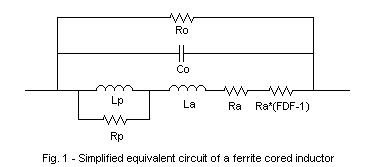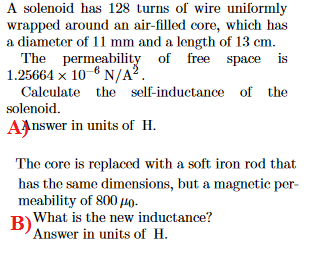


One reason for this is the fact that permeability changes as the field intensity varies (remember the nonlinear “B-H” curves for different materials). It must be understood that this formula yields approximate figures only.


These factors all dictate inductance by affecting how much magnetic field flux will develop for a given amount of magnetic field force (current through the inductor’s wire coil): Number of Wire Wraps, or “Turns” in the CoilĪll other factors being equal, a greater number of turns of wire in the coil results in greater inductance fewer turns of wire in the coil results in less inductance.Įxplanation: More turns of wire means that the coil will generate a greater amount of magnetic field force (measured in amp-turns!), for a given amount of coil current.Īll other factors being equal, greater coil area (as measured looking lengthwise through the coil, at the cross-section of the core) results in greater inductance less coil area results in less inductance.Įxplanation: Greater coil area presents less opposition to the formation of magnetic field flux, for a given amount of field force (amp-turns).Īll other factors being equal, the longer the coil’s length, the less inductance the shorter the coil’s length, the greater the inductance.Įxplanation: A longer path for the magnetic field flux to take results in more opposition to the formation of that flux for any given amount of field force (amp-turns).Īll other factors being equal, the greater the magnetic permeability of the core which the coil is wrapped around, the greater the inductance the less the permeability of the core, the less the inductance.Įxplanation: A core material with greater magnetic permeability results in greater magnetic field flux for any given amount of field force (amp-turns).Īn approximation of inductance for any coil of wire can be found with this formula: There are four basic factors of inductor construction determining the amount of inductance created.


 0 kommentar(er)
0 kommentar(er)
